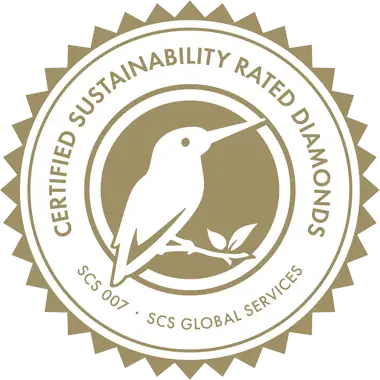Electronic Grade
Diamond Semiconductors Reborn: Precision-Doped for Extreme Electronics
From Ultra-Wide Bandgap FETs to Quantum Electrodes – Engineered Atom-by-Atom
Core Value Proposition
We pioneer with atomically controlled doping (Boron/Phosphorus), buried heterostructures, and epitaxial integration – unlocking diamond’s 10,000× higher electron mobility than SiC for revolutionary power devices.
Doping Capabilities Overview
| Parameter | Boron (p-type) | Phosphorus (n-type) |
| Doping Range | 10¹⁶ → 10²¹ atoms/cm³ | 10¹⁶ → 10¹⁹ atoms/cm³ |
| Conductivity | 10⁻³ → 10³ S/cm | 10⁻⁵ → 10² S/cm |
| Critical Formats | ◇ Freestanding substrates ◇ Epitaxial layers ◇ Buried interlayers | ◇ Delta-doped channels ◇ Ohmic contact layers |
Breakthrough Product Lines
Boron-Diamond Power Substrates
- Ultra-High Power FETs: 10²⁰/cm³ substrates for 20 kV blocking voltage
- Low-Loss Electrodes: >3000 S/cm conductivity (replaces Pt in electrolysis)
- Quantum Sensors: 10¹⁶/cm³ “quiet zones” for NV⁻ coherence
Doped Heterostructures
Multi-layer stacks with 10 nm resolution:
- Insulating/P-Type/Insulating sandwiches for JFETs
- Buried Boron Channels (10¹⁹/cm³) in intrinsic diamond
- N-P-N Quantum Wells for diamond transistors
Phosphorus-Diamond Epitaxy
The n-type holy grail – now manufacturable:
- Electron mobility >600 cm²/V·s at 300K
- UV photodetectors with 200-225 nm cutoff
- Diamond CMOS integration kits

- Boron Doped
- Concentration up to 10^20 /cm3
- Phosphorous Doped
- Controlled Doped inter-layers
- Resistivity 1 Ω cm
Are you interested in Electronic Grade?
Why Diamond Electronics?
| Property | Diamond vs. SiC/GaN | Our Advantage |
| Breakdown Field | 10 MV/cm (3× GaN) | Enables 30kV+ devices |
| Thermal Conduct | 2200 W/mK (5× SiC) | No derating at 500°C |
| Carrier Mobility | 4500 cm²/V·s (10× Si) | GHz switching in mm² chips |
| Johnson’s Figure | Highest of any material | 100× power handling vs. Si |
Targeted Applications
Next-Gen Power Electronics
10 kV+ diamond Schottky diodes (10¹⁷/cm³ drift layers)
- 50 kW RF amplifiers with boron-doped heat spreaders
- Fusion reactor diagnostics (radiation-hard sensors)”
Quantum Electrode Systems
Boron-doped nanowire electrodes for neural interfaces
- NV⁻-to-dopant coupled qubits (10¹⁹/cm³ interlayers)
- Electrochemical NMR diamonds with P-doped contacts
Extreme Environment Sensors
Jet engine T-sensors (600°C operation)
- Deep-earth geophysical probes
- Venus lander electronics (500°C, 90 atm)
Technical Specifications
| Feature | Specification | Certification Method |
| Doping Accuracy | ±5% across 50 mm wafer | SIMS depth profiling |
| Layer Thickness Control | ±10 nm (buried interlayers) | TEM cross-section |
| Mobility @ 300K | Holes: 2000 cm²/V·s Electrons: 600 cm²/V·s | Hall measurement |
| Surface Roughness | <1 nm Ra (epitaxy-ready) | AFM 50×50 μm scan |
| Wafer Size | 20×20 mm → 30×30 mm | Laser interferometry |
Manufacturing Excellence
MPCVD Process: Gas-phase doping with real-time optical monitoring
- Buried Layer Tech: Stoichiometric interfaces with <0.1% cross-contamination
- Industrial Scale: Batch production of 10+ wafers/month (20×20 mm)
Why Competitors Can’t Match This
While others struggle with diamond doping, we deliver:
- 10²⁰/cm³ Boron: Highest p-type conductivity commercially available
- Stable n-type: Phosphorus doping without compensatory nitrogen
- True 3D Integration: Pure/doped layer stacks – not just surface doping
Frequently Asked Questions (FAQs)
Why is diamond better than silicon for power electronics?
Diamond can handle 10,000× higher voltages and 5× more heat than silicon. It lets electrons move faster, making devices smaller, more efficient, and able to work in extreme conditions (like 500°C or space).
Can diamond be doped like silicon for transistors?
Yes! We precisely add boron (p-type) and phosphorus (n-type) to diamond:
Boron doping creates ultra-powerful switches (up to 20,000V).
Phosphorus doping (a breakthrough) enables diamond CMOS chips.
What sizes do your diamond wafers come in?
We offer 20×20 mm to 30×30 mm wafers with:
±5% doping accuracy (checked by lab tests).
<1 nm surface smoothness (ready for chip-making).
Multi-layer designs (like boron channels inside pure diamond).
Where is diamond electronics being used today?
Power grids: 10,000V+ switches with near-zero energy loss.
Quantum tech: Sensors and qubits using doped diamond layers.
Space/aviation: Electronics that survive Venus-like heat and radiation.
How do I test diamond for my project?
We provide:
Band structure simulations (to predict performance).
Sample wafers with doping reports.
Integration kits for engineers.
